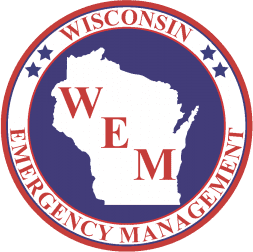Reports & Informational Resources
Coastal Hazards
Wisconsin’s Great Lakes communities experience a wide range of natural hazards that include flooding, high and low lake levels, severe storms, storm waves and storm surge, shoreline erosion, ice heaves, landslides, and rare, large edge waves (seiches). All of these coastal hazards threaten lives and property, a problem that is becoming more critical as coastal development pressures increase and potential impacts of climate change manifest themselves.
Additional information can be found at the following:
Resiliency & Climate Change
FEMA is committed to promoting resilience as expressed in recent Presidential directives, task force reports, policy statements, and the 2014-2018 FEMA Strategic Plan. FEMA encourages recipients (states) and sub-recipients (communities) of Federal grants to consider climate change adaptation and resiliency in their planning and scoping efforts.The challenges posed by climate change, such as more intense storms, frequent heavy precipitation, heat waves, drought, and extreme flooding could significantly alter the types and magnitudes of hazards faced by communities and the emergency management professionals serving them. Regardless of why the climate is changing, emergency managers have to be poised to respond to disasters and support preparedness efforts nationwide.
Additional information can be found at the following:
Wisconsin Department of Health Services Toolkits
The Wisconsin Department of Health Services has created a series of toolkits to provide information to local governments, local health departments, and citizens in Wisconsin about preparing for and responding to different weather related emergencies. These toolkits focus on providing background information, practical guidance, strategies, media releases, talking points, definitions, and useful reference materials.
Additional information and the toolkits for Extreme Heat, Flood, Winter Weather, Wildfire, Chemical Release, Algal Blooms, and Drought can be accessed at the Wisconsin Department of Health Services, Toolkits for Health Professionals, website
Storm Shelter Guidance
Construction Techniques to Prevent Future Wind Damage
Flood of June 2008 in Southern Wisconsin
This report was prepared by the US Geological Survey (USGS) in cooperation with the Federal Emergency Management Agency (FEMA). Flood peak inundation maps and water surface profiles were generated in GIS for the communities of Reedsburg, Rock Springs, La Farge, Gays Mills, Milford, Jefferson, Fort Atkinson, Janesville, and Beloit by combining flood high-water marks with available 1-10 meter resolution digital-elevation-model data. The high-water marks used in the maps were a combination of those surveyed during the June 2008 flood by communities, counties, and federal agencies and hundreds of additional marks surveyed in August 2008 by the USGS. The flood maps and profiles outline the extent and depth of flooding through the communities and were used in flood response and recovery efforts by local, county, state, and federal agencies.
The report can be downloaded from the USGS website.
Tribal Planning Resources
Local Planning Resources
Mitigation Resources
Since standard homeowners insurance doesn’t cover flooding, it’s important to purchase additional protection if your home is at risk from flooding.
Just a few inches of water from a flood can cause tens of thousands of dollars in damage. Over the past 10 years, the average flood claim has amounted to over $33,000. Flood insurance is the best way to protect yourself from the devastating financial loss that can accompany severe flooding.
The National Flood Insurance Program (NFIP) is administered by the Federal Emergency Management Agency (FEMA), which works closely with private insurance companies to offer flood insurance to property owners and renters. In order to qualify for flood insurance, a community must join the NFIP and agree to enforce sound floodplain management standards.
NFIP flood insurance policies can be purchased through property and casualty insurance agents. Rates are set and do not differ from company to company or agent to agent. These rates depend on many factors, which include the date and type of construction of your home, along with your building’s level of risk. If at risk of flooding, investing in flood insurance is the best thing you can do to protect your home, business, family, and financial security.
Typically, there’s a 30-day waiting period from the date of purchase until your policy goes into effect. That means now is the best time to buy flood insurance.
Find out more about the NFIP and how it can help you protect yourself by visiting the websites below:
Increased Cost of Compliance (ICC) Coverage
If a flood damages your property, you may be required by law to bring your home up to community and/or state floodplain management standards. If you have NFIP insurance, and your home has been declared substantially damaged by your community, ICC coverage is provided to cover up to $30,000 of the cost to elevate, flood proof, demolish, or relocate your property. ICC coverage is in addition to the coverage you receive to repair flood damages; however, the total payout on a policy may not exceed $250,000 for residential buildings and $500,000 for non-residential buildings.
Additional information can be found on FEMA’s Increased Cost of Compliance Coverage website.

